Cargando...
Recursos educativos
-
Nivel educativo
-
Competencias
-
Tipología
-
Idioma
-
Tipo de medio
-
Tipo de actividad
-
Destinatarios
-
Tipo de audiencia
-
Creador
Lo más buscado
- Múltiplos de 9
- Salvador Allende
- Experimentos tercero
- Dibujo ecosistema
- Animales marinos
- Actividades didacticas en quinto
- Canciones para dormir
- Cultura y lenguas clásicas
- Dibujos colorear otoño
- Derechos de la infancia
- Educared experimentos
- Ángulos interiores de un polígono
- Colonización de América
- Letras para recortar
- Actividades artisticas
-
End-of-unit activities - The Plant Kingdom
EduBook Organización
- 2783 visitas
Plants are one of the most visible elements in the countryside. They provide colour, greenery and beauty where they live and flourish. Plants are not only decorative, but also essential life-giving…
-
Introduction - The Plant Kingdom
EduBook Organización
- 2678 visitas
Plants are one of the most visible elements in the countryside. They provide colour, greenery and beauty where they live and flourish. Plants are not only decorative, but also essential life-giving…
-

Animal reproduction
EduBook Organización
- 14354 visitas
Reproduction is the only vital function that is not needed to keep an individual alive. It ensures the continuation of the species. Although sexual reproduction is a universal characteristic of animals,…
-

The Animal Kingdom (I). Invertebrates
EduBook Organización
- 14117 visitas
Today our planet is home to a great variety of organisms. This is the result of an evolutionary process that began some 3.5 billion years ago. Invertebrates are a very diverse group of animals that do…
-

Introduction
EduBook Organización
- 7569 visitas
1. From biomolecules to organisms The molecules that make up living things, biomolecules, join together to form large molecules called macromolecules. The next level of complexity is the cell, which is…
-

Summaries - Living things
EduBook Organización
- 5085 visitas
1. Characteristics of living things Living things or organisms are different from non-living things because: They are active: they do things that help them to survive and reproduce. They are sensitiveto…
-
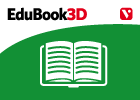
Characteristics of living things
EduBook Organización
- 5056 visitas
Living things (or organisms) are different from non-living things because: They are active: they do things that help them to survive and reproduce. They are sensitive to their surroundings. Vital…
-
Introduction - Animal reproduction
EduBook Organización
- 1 lo usan
- 4818 visitas
Reproduction is the only vital function that is not needed to keep an individual alive. It ensures the continuation of the species. Although sexual reproduction is a universal characteristic of animals,…
-
Introduction - The Animal Kingdom (I). Invertebrates
EduBook Organización
- 1 lo usan
- 4779 visitas
Today our planet is home to a great variety of organisms. This is the result of an evolutionary process that began some 3.5 billion years ago. Invertebrates are a very diverse group of animals that do…
-

Investigate - Animal reproduction
EduBook Organización
- 1 lo usan
- 4642 visitas
Reproduction is the only vital function that is not needed to keep an individual alive. It ensures the continuation of the species. Although sexual reproduction is a universal characteristic of animals,…
Te estamos redirigiendo a la ficha del libro...













